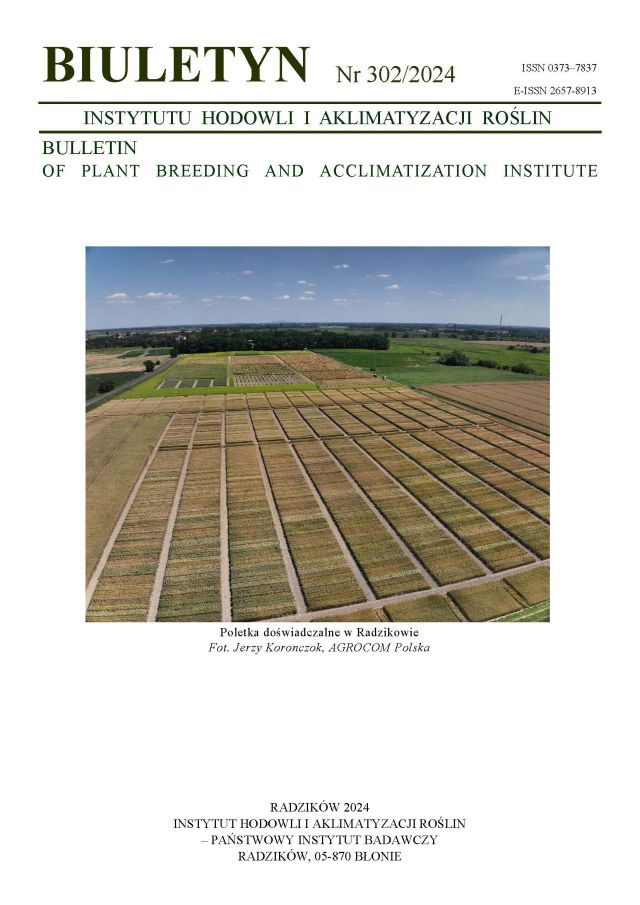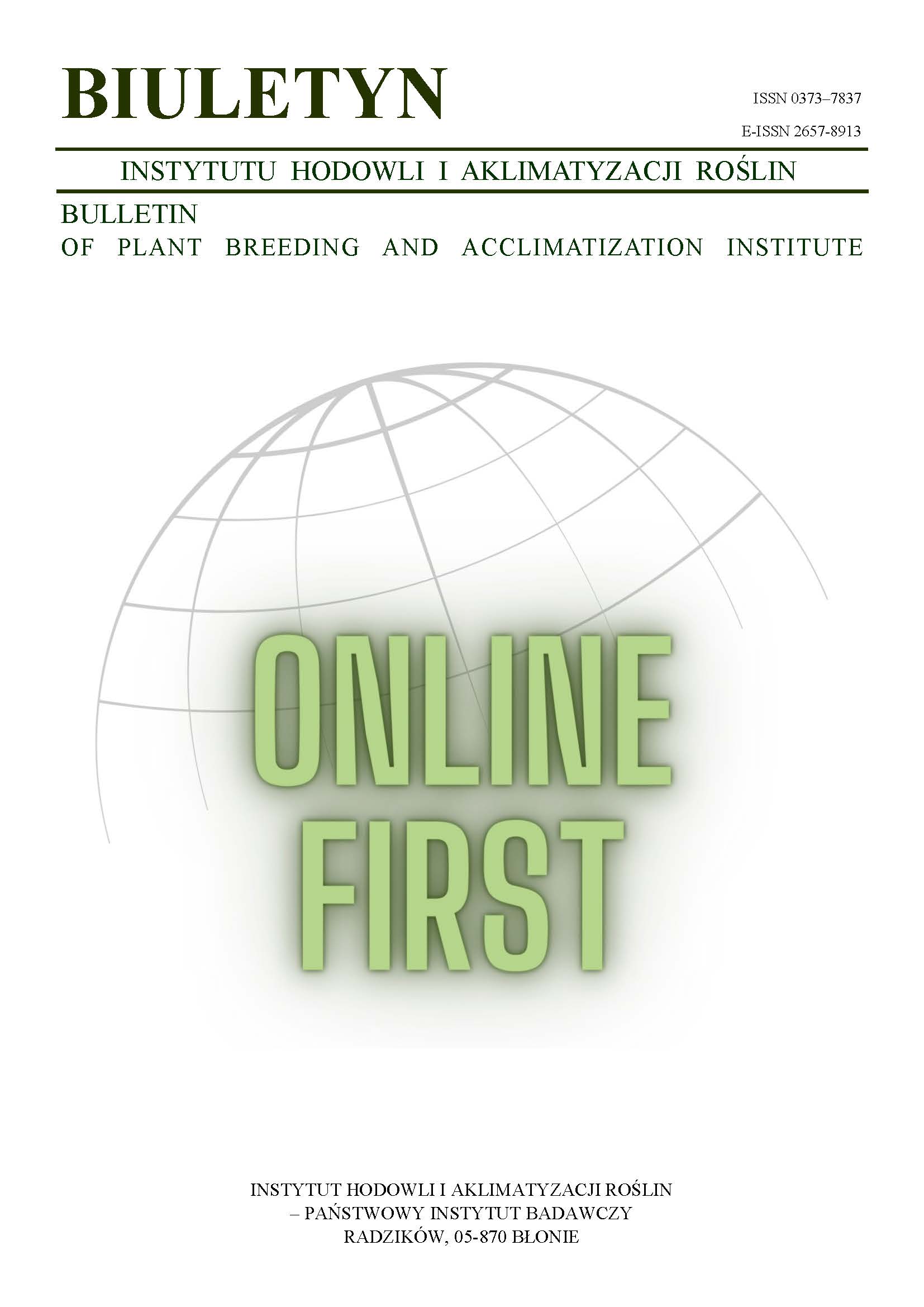Heat treatment methods of frozen French fries as a factor determining their flavour profile
Wacław Mozolewski
siemasz@uwm.edu.plUniwersytet Warmińsko-Mazurski w Olsztynie (Poland)
Magdalena Warmińska
Wyższa Szkoła Gospodarki w Bydgoszczy (Poland)
Aneta Dąbrowska
Wyższa Szkoła Gospodarki w Bydgoszczy (Poland)
Abstract
The aim of the study was to establish the influence of different heat treatment methods used for frozen potato French fries on their flavour profiles. The material for this study were straight cut and crinkle cut French fries produced by Aviko and Mc’Cain. The fries were prepared for consumption according to the instruction on the packaging by the use of an electric oven, a microwave oven and a deep fryer. The sensory evaluation was performed according to PN-ISO 6564 by a well-trained professional panel of 6 experts. The intensity of particular flavour descriptors was evaluated by the use of a 100 millimeter non-structural graphic scale and subjected to statistic calculation using the method of variation analysis. Preparation of French fries in the microwave oven produced typical flavour of boiled potato, which differentiated them significantly (α = 0.05) from the French fries reheated in the electric oven and deep fryer. The hot oil of the deep fryer proved to be the best heating medium contributing to the emergence of characteristic flavour of fried potato and a fatty nut-like (α = 0.01), whereas the hot air of the oven and the microwave had less influence on the appearing of positive flavour profiles of the French fries. It was observed that negative flavour profiles diminished in French fries reheated in a fryer: sour, putrid, and unfamiliar one. The environment of electrical and microwave oven with thermal cycling created a typical profile of a slightly burnt product. The tastiest French fries were obtained by frying the product in the deep fryer — they were the most acceptable and with a higher intensity of positive rather than negative profiles as compared with French fries prepared using other methods.
Keywords:
French fries, flavour profile, heat treatment, sensory evaluationReferences
Dobarganes M. C., Marquez-Ruiz G. 2007. Formation and analysis of oxidized monomeric, dimeric and higher oligomeric triglycerides, Erickson M. D. (Ed.) Deep frying, chemistry, nutrition, and practical applications. AOCS Press, Urbana IL.: 87-110.
Google Scholar
Duckham S. C., Dodson A. T., Bakker J., Ames J. M. 2001. Volatile flavour components of baked potato flesh: A comparison of eleven potato cultivars. Nahrung/Food 45: 317-323.
Google Scholar
Grochulska C. 2008. Wszechstronne ziemniaczki — raport o rynku frytek i przetworów ziemniaczanych. Fresh & Cool Market” nr 8 (14): 1 — 5.
Google Scholar
Jansky S. H. 2010. Potato flavor. Am. J. Pot. Res. 87: 209 — 217.
Google Scholar
Kita A., Lisińska G., Tajner-Czopek A., Pęksa A., Rytel E. 2009. The properties of potato snacks influenced by the frying medium. In: Yee N., Bussel W. (Eds) Potato IV. Food 3 (Special Issue 2): 93 — 98.
Google Scholar
Kita A., Lisińska G. 2007. Ocena składu chemicznego i jakości organoleptycznej mrożonych produktów ziemniaczanych pochodzących z sieci handlowej Żywność. Nauka. Technologia. Jakość, 3 (52): 15 — 27.
Google Scholar
Michalska A., Zieliński H. 2007. Produkty reakcji Maillarda w żywności. Żywność. Nauka. Technologia. Jakość. 2 (51): 5 — 16.
Google Scholar
Mozolewski W., Pomianowski J. F., Kopeć M. 2009. Metody restytucji warunkiem jakości frytek ziemniaczanych, Inż. Ap. Chem. 2: 106 — 107.
Google Scholar
Orthoefer F. T., Gurkin S., Liu K. 1996. Dynamics of frying, Perkins E. G., Erickson M. D. (Ed.): Deep frying: Chemistry, nutrition, and practical applications, AOCS Press, Champaign, IL: 223 — 244.
Google Scholar
Oruna-Concha M.J., Bakker J., Ames J.M. 2002. Comparison of the volatile components of two cultivars of potato cocked by boiling, conventional baking and microwave baking. J. Sci. Food Agric. 82: 1080 — 1087.
Google Scholar
Palazoglu T.K., Savrand D., Gökmen V. 2010. The effect of cooking method (baking compared with frying) on acrylamide level of potato chips was investigated in this study. J. Food Sci. 75, 1: 25 — 29.
Google Scholar
PN-A-82350:1996. Mrożone wyroby kulinarne-Pobieranie próbek i metody badań.
Google Scholar
PN-ISO 6564.1999. Analiza sensoryczna. Metodologia. Metody profilowania smakowitości.
Google Scholar
Sawicka B., Barbaś P. 2011. Zależność jakości frytek od składu chemicznego bulw ziemniaka w ekologicznym i integrowanym systemie uprawy. Nauka Przyr. Technol. 5, 1: 5 — 11.
Google Scholar
Sawicka B., Mikos-Bielak M. 2001. Quality of French-fries of 37 potato cultivars in conditions of application of growth regulators Mival and Poteitin. Electr. J. Pol. Agric. Univ. Ser. Food Sci. Technol. 5, 2: 1 — 6.
Google Scholar
Tabee E., Azadmard-Damirchi S., Jägerstad M., Dutta P. C. 2008. Lipids and phytosterol oxidation in commercial French fries commonly consumed in Sweden. J. Food Comp. Anal. 21, 2: 169 — 177.
Google Scholar
Tajner-Czopek A., Kita A., Lisińska G. 2008. Zawartość akrylamidu we frytkach w zależności od temperatury i czasu smażenia. Zesz. Probl. Post. Nauk Roln. 530: 371 — 379.
Google Scholar
van Loon W. A. M., Linssen J. P. H., Legger A., Posthumus M. A., Voragen A. G. J. 2005. Identification and olfactometry of French fries flavour extracted at mouth conditions. Food Chem. 90: 417 — 425.
Google Scholar
Authors
Magdalena WarmińskaWyższa Szkoła Gospodarki w Bydgoszczy Poland
Authors
Aneta DąbrowskaWyższa Szkoła Gospodarki w Bydgoszczy Poland
Statistics
Abstract views: 122PDF downloads: 95
License
Copyright (c) 2012 Wacław Mozolewski, Magdalena Warmińska, Aneta Dąbrowska

This work is licensed under a Creative Commons Attribution-ShareAlike 4.0 International License.
Upon submitting the article, the Authors grant the Publisher a non-exclusive and free license to use the article for an indefinite period of time throughout the world in the following fields of use:
- Production and reproduction of copies of the article using a specific technique, including printing and digital technology.
- Placing on the market, lending or renting the original or copies of the article.
- Public performance, exhibition, display, reproduction, broadcasting and re-broadcasting, as well as making the article publicly available in such a way that everyone can access it at a place and time of their choice.
- Including the article in a collective work.
- Uploading an article in electronic form to electronic platforms or otherwise introducing an article in electronic form to the Internet or other network.
- Dissemination of the article in electronic form on the Internet or other network, in collective work as well as independently.
- Making the article available in an electronic version in such a way that everyone can access it at a place and time of their choice, in particular via the Internet.
Authors by sending a request for publication:
- They consent to the publication of the article in the journal,
- They agree to give the publication a DOI (Digital Object Identifier),
- They undertake to comply with the publishing house's code of ethics in accordance with the guidelines of the Committee on Publication Ethics (COPE), (http://ihar.edu.pl/biblioteka_i_wydawnictwa.php),
- They consent to the articles being made available in electronic form under the CC BY-SA 4.0 license, in open access,
- They agree to send article metadata to commercial and non-commercial journal indexing databases.
Most read articles by the same author(s)
- Wacław Mozolewski, Monika Radzymińska, Tomasz Łazicki, The quality of table potato in the opinion of consumers , Bulletin of Plant Breeding and Acclimatization Institute: No. 272 (2014): Regular issue
- Wacław Mozolewski, Tomasz Łazicki, The quality and technological usefulness of potato flakes , Bulletin of Plant Breeding and Acclimatization Institute: No. 266 (2012): Regular issue
- Wacław Mozolewski, Anna Gątarska, Tomasz Łazicki, The influence of heat treatment methods on French fries aroma profiling , Bulletin of Plant Breeding and Acclimatization Institute: No. 266 (2012): Regular issue














